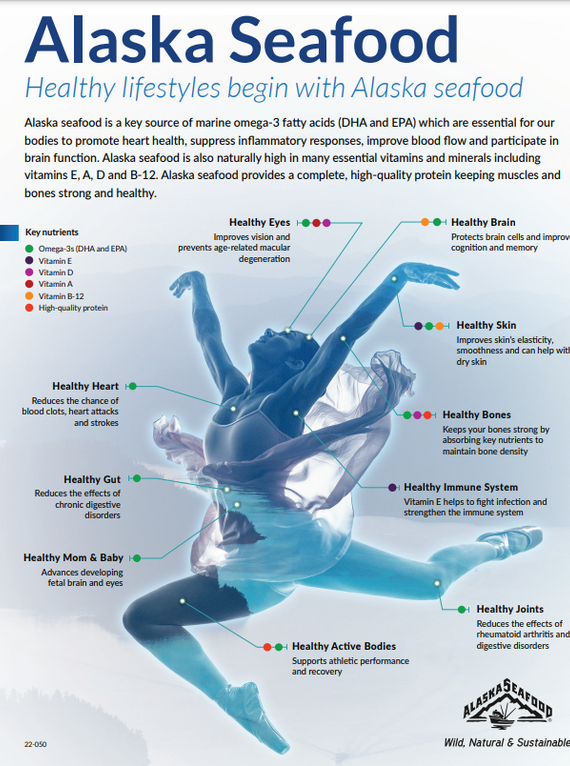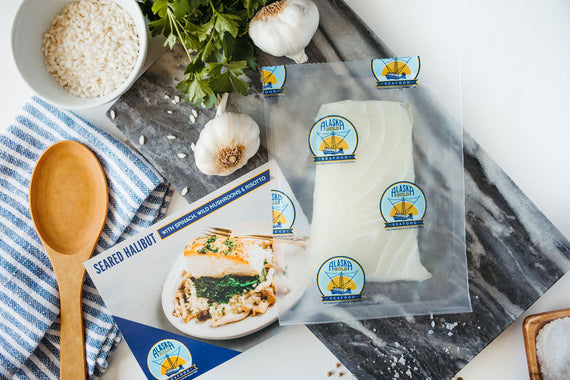
We sometimes get inquiries from customers asking if we sell low histamine seafood. Our first response is that all of our seafood is flash-frozen with state of the art freezing technologies. In addition, we have very high quality standards. We are a fishermen-owned co-op and there is great pride among our owners in producing the highest quality seafood possible. In addition to flash freezing fish, what is key is what fishermen do on the boat. Once a fish is landed, it can only degrade from that point without proper handling, which we’ll discuss in more detail below.
But the other key thing to note is that we have had a lot of histamine intolerant customers have great experience with our seafood. As one customer review noted: “Great Low Histamine Salmon for Sticklers from WA State. This is the only salmon we buy now. My partner has an intolerance to histamine (found in old fish), and she says her body does not react to this salmon negatively like other brands, which tells us this fish is the least decayed we’ve found - which has been a relief. We’ve finally found super fresh wild salmon in Alaska Gold! We feel grateful for this salmon’s freshness, and we enjoy the taste and nutritiousness. It’s a staple of our diet; we eat it several times a week. We have a place in our freezer stocked with salmon. We feel glad we gave Alaska Gold a try many orders ago. And, the quality of each batch has continued to be excellent ever since.”
What is low histamine seafood?
Histamines tend build up in older fish at warmer temperatures. Warm-water fish will be much more prone to histamines than cold-water seafood. Starting with cold water fish from Alaska is one component of having low histamine seafood. The other component of histamine build-up is how it was handled on board, then frozen, and the temperature changes it might have experienced in transit.
The fish we catch is caught, bled, gutted, and then immediately iced within minutes of catch, so that it gets down to 32 degrees as quickly as possible. And then it is portioned, pin bones are removed, packaged in vacuum seal, and then blast frozen once it makes it to our plant in Sitka. (We do also have frozen-at-sea salmon. But note frozen-at-sea salmon does need to be thawed out to remove pin bones and to portion. We find the single-frozen iced salmon and the freezer salmon are roughly the same in quality.) Most importantly, because of the quality on the boat and the state-of-the-art freezing technology at our plant, our seafood is low in histamines.
What are histamines?
A histamine is a biogenic compound with a wide range of biological effects on various types of cells. In short, histamines are compounds released by cells in response to allergic or inflammatory reactions. For example, many people take anti-histamines for seasonal allergies. Certain medical conditions may increase the propensity for histamine intolerance among certain people. Having gastrointestinal disorders, gastroesophageal reflux disease (GERD), Mast Cell Activation Syndrome, liver conditions, and chronic or extreme stress can make one more prone to histamine intolerance. An intolerance is different than an allergy. Food allergies affect an estimated 8% of children under age 5 and up to 4% of adults. If someone with food allergies ingests even a tiny portion of the allergen, the allergy can produce anaphylaxis. In contrast, an intolerance will not have such and acute effect.
Histamine intolerance is not life-threatening and won’t necessarily cause symptoms every time a person eats a specific food. Histamine levels vary in the same type or brand of food, depending on factors like how the food was harvested, processed, and stored.
Certain species of fish are more prone than others to histamines, and these levels of histamines vary also depending on how the fish are handled on board, processed and then stored and shipped.
It must also be said that seafood can be very good for those experiencing histamine intolerance. Our king salmon is rich in many mast cell-supporting nutrients, like Omega 3s, Vitamin D, zinc, and heme-iron.
Some foods are by nature high in histamines such as alcohol, fermented foods, vinegar, dried fruits, avocados, eggplant, spinach, processed or smoked meat, shellfish, aged cheese. Meanwhile, other foods trigger a histamine release in the body: alcohol, bananas, tomatoes, wheat germ, beans, papaya, chocolate, citrus fruits, some nuts (walnuts, cashews, and peanuts) and some food dyes and other additives. Because the above foods are high in histamines or can trigger reactions does not mean that the general public shouldn't eat them, but those with a known histamine intolerance should reduce or avoid consumption.
What is histamine intolerance?
Histamine intolerance is assumed to be due to a deficiency of the gastrointestinal enzyme diamine oxidase and, therefore, the food component histamine not being degraded and/or absorbed properly within the GI tract. Histamine intolerance causes variable, functional, nonspecific, non-allergic GI and extra-intestinal complaints.
Foods like seafood can build up in histamines because bacteria, much of which can produce histamines, grow quickly on meats and seafood when they haven’t been handled properly. Many strains of bacteria on seafood are histamine-producing and therefore more bacteria on seafood results in higher histamine levels. If you’ve ever taken a food safety class, you might remember the Fat Tom acronym for what bacteria need to survive and grow. Fat Tom refers to the following:
Food
Acidity
Temperature
Time
Oxygen
Moisture
Seafood is prone to all of these growth factors. Seafood is a food source so naturally it’s also a food source to bacteria. Seafood varies in acidity between 5.3 and 6.5 on the pH scale. Acidity isn’t necessarily bad in foods, but it is a growth factor. Just like us, fish is made up of a significant amount of moisture. Water content is present in all animal protein.
We really can’t do anything about the above factors (Food, Acidity, Moisture), but we can control the other factors to reduce the bacteria and histamine contents. We can change some of the other factors to keep bacteria and hence histamine levels lower. Temperature is the key factor, which is why we get the fish as cold as possible as quickly as possible. Our Sitka plant is equipped with state-of-the-art freezing technologies to achieve low temperatures. These freezers can get down to 40 degrees below zero. And quickly. Pulling the heat off the fish and getting them to these low internal temperatures of 30 degrees below zero is absolutely key to maintaining the “cold chain” and consequently our high standards of quality. Then we ship with plenty of dry ice, which is as cold as seventy degrees below zero.
Oxygen is in the air around us, so naturally seafood is going to be exposed to it as soon as it is pulled out of the water. Seafood can be exposed during the time it takes to process it. This is also something that can’t be avoided, but when you process and get the fish frozen quickly, it makes a huge difference to reducing histamines. Seafood is frozen and packaged as soon as possible after processing, that goes a long way to reducing the exposure.
A factor that we do have control over is time. But time is going to be unusual in how we consider Alaska seafood. Because of Alaska’s remoteness and the lack of consistent flights due to a limited air logistics infrastructure, only a tiny percentage of Alaska seafood heads out unfrozen to be eaten the next day. Because of this inability to get fish out for next-day consumption, we go into great detail in this blog on why frozen seafood is superior to fresh seafood. The bottom line is that when we flash freeze our fish as soon as possible after being landed this fish becomes easier to transit. In addition, it can stay in great condition if kept in commercial freezing for a long—up to two years or more! This is much better than not freezing a fish and the potential logistics hassle of getting the fish to its final destination quickly.
Freshly caught fish contains virtually no histamines. But histamine levels build up over time depending on how it’s handled, which is why flash freezing locks in the fish’s quality and low histamine levels. So here the Time factor behind bacteria and histamine build-up is altered by flash freezing fish and keeping in commercial frozen storage.
It is not uncommon for unfrozen meat and fish to sit for a week or more either in the grocery store case. That’s more time for bacteria to grow. Certain seafood cases in grocery stores have better icing procedures than others, another huge factor playing into bacteria build-up that is almost never mentioned.
Oxygen exposure can also occur during the time it sits in the butcher or fishmonger’s case at the store. This leads into another factor which we can do something about: time. See, if you just pick up unfrozen seafood from the grocery store, you really don’t know how old the seafood is. You don’t know how long it was in transit. And you don’t know how long it has been sitting unfrozen at the store. It’s also why getting seafood that is frozen immediately after processing is ideal. And it’s why we recommend keeping seafood frozen until you are ready to cook it. Many of our histamine intolerant customers cook our seafood from frozen. In other words, they do not thaw the seafood (which we would recommend otherwise to other customers that are not histamine intolerant). This will take some time to get used to as you will have to change cook times and it can make your seafood cook unevenly. But this way, you won’t have to be concerned with temperature fluctuations in your refrigerator.
Bacteria don’t reproduce nearly as quickly when seafood is frozen.
40°F is the low end of what is considered the “danger zone” for seafood. Bacteria grow quickly in the danger zone.
It’s recommended by the FDA that most refrigerators be below 40°. So, if your refrigerator was at 39°, that technically wouldn’t be in the danger zone. But refrigerators fluctuate in temperature, depending on how much you open the door or put warm items in. If you open the door a lot, the temperature will rise. If you put hot foods in the refrigerator, that can cause the temperature inside the refrigerator to rise, too.
Why Choose Frozen Seafood From a Fishermen-owned Co-op
Knowing where your seafood is coming from and how it has been handled makes a huge difference for avoiding histamine issues. If you buy your seafood from a grocery store seafood counter, you may not get much information about what you’re buying or how long it has been sitting there. It is not uncommon for fish to sit for a week or more unfrozen in the butcher’s case. With Alaska Gold, you’re getting flash-frozen seafood from a fishermen-owned co-op with very high quality standards. We take great pride in what we do. In addition to our fishermen's high standards, our processing crew is focused on quality and maintaining the cold chain.
Please Note:
Generally, a low-histamine diet isn’t for everybody, but it can help with some issues. Any information published on this website is not intended as a substitute for medical advice and you should not take any action before consulting a health care professional.



